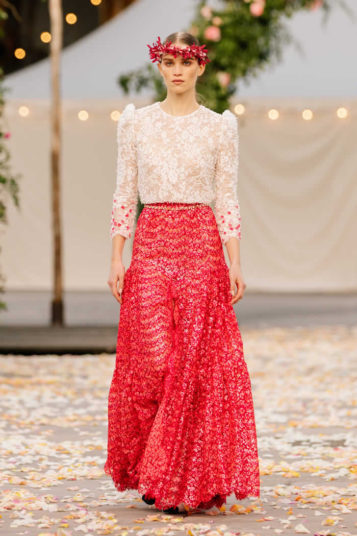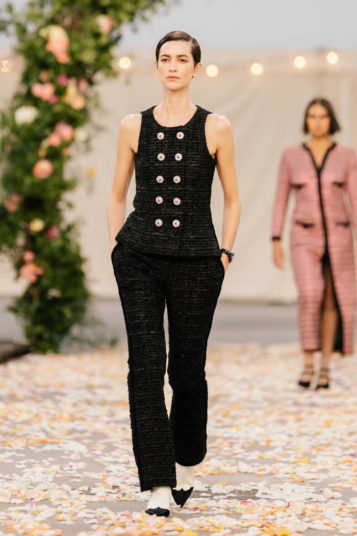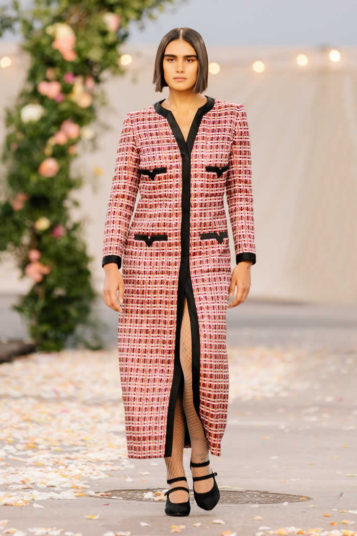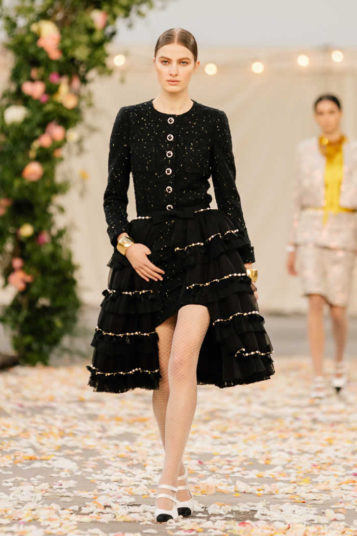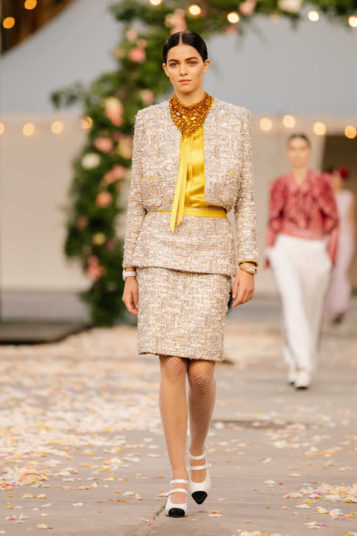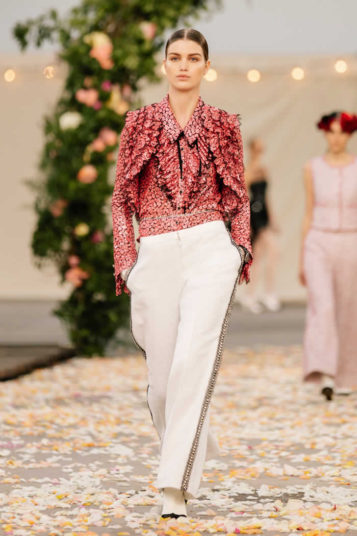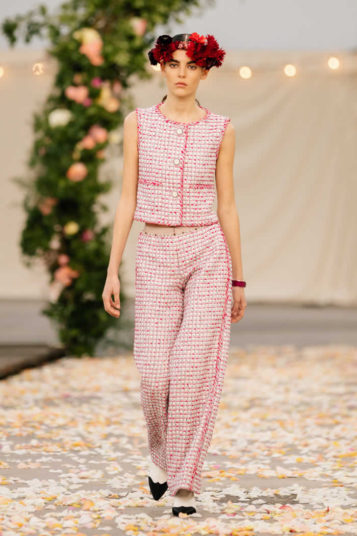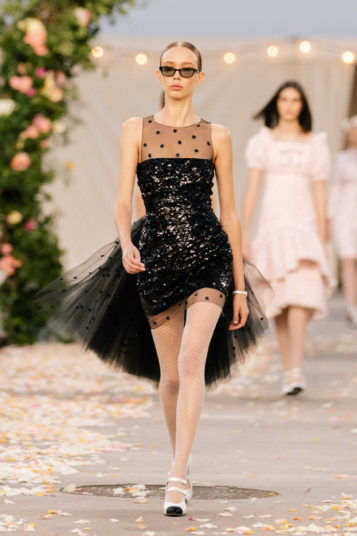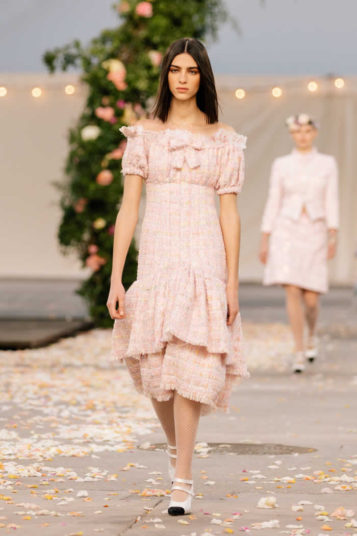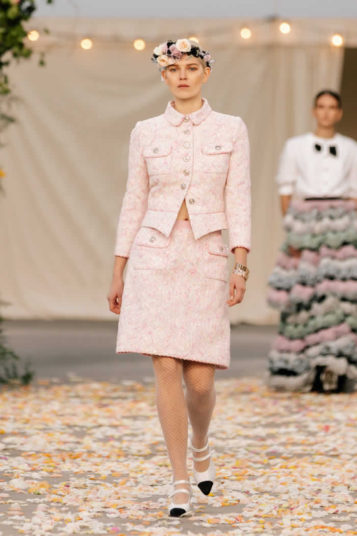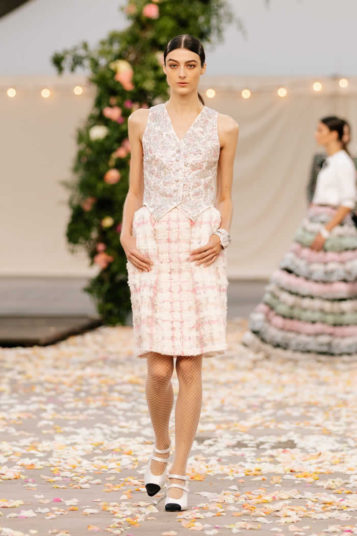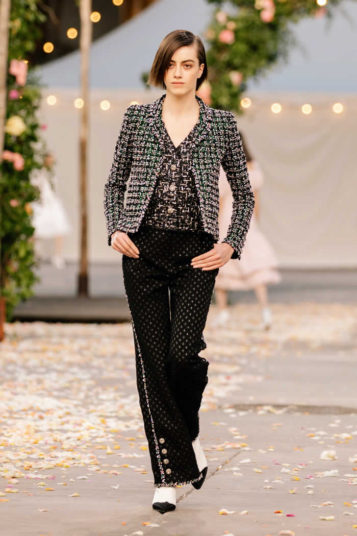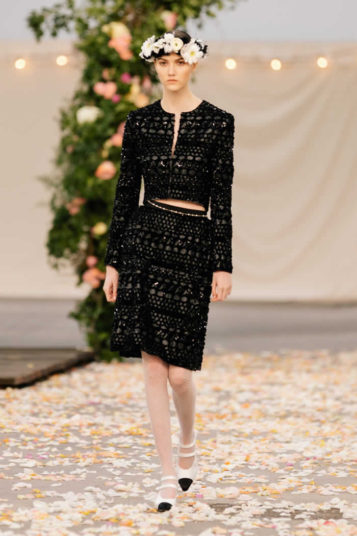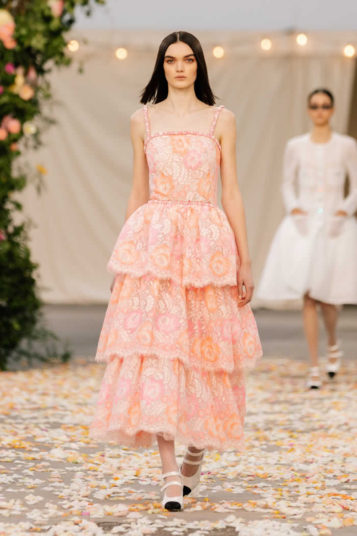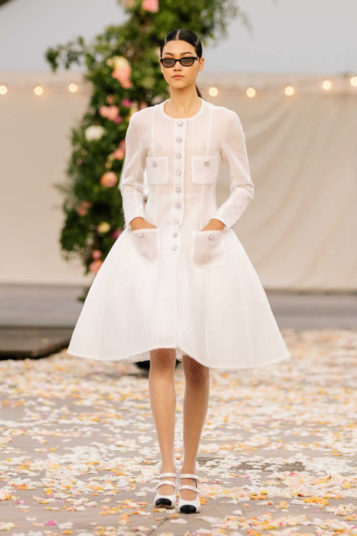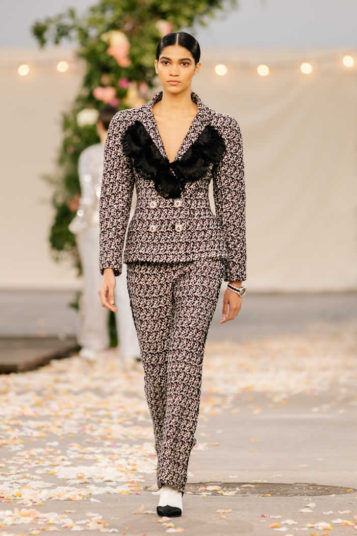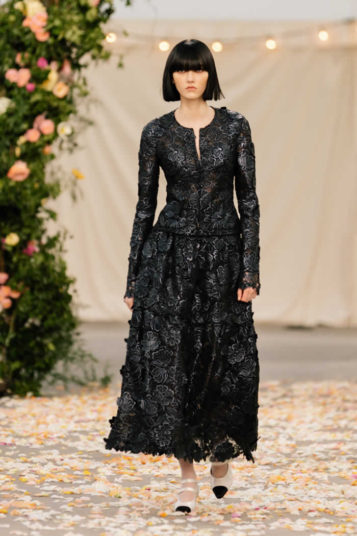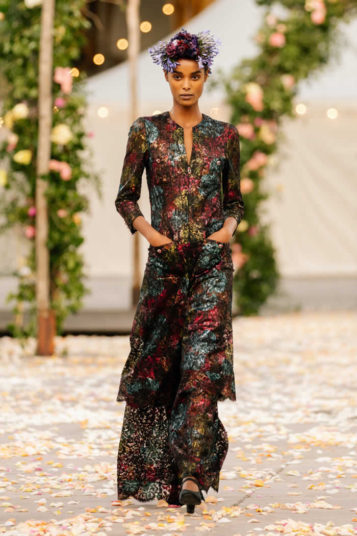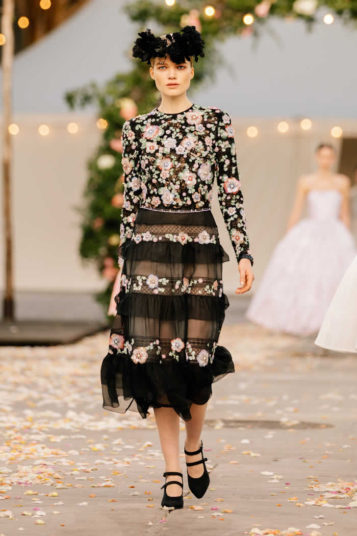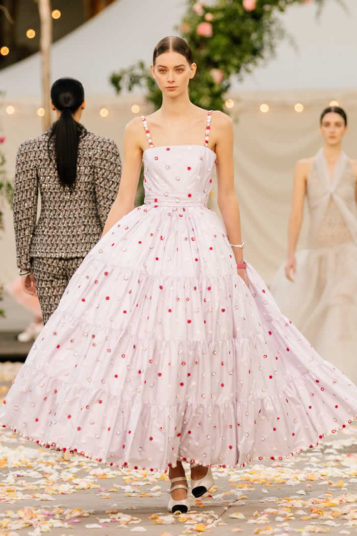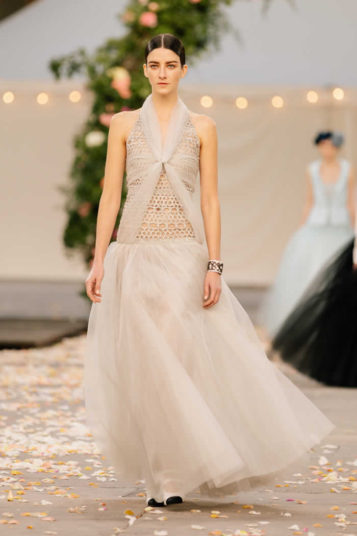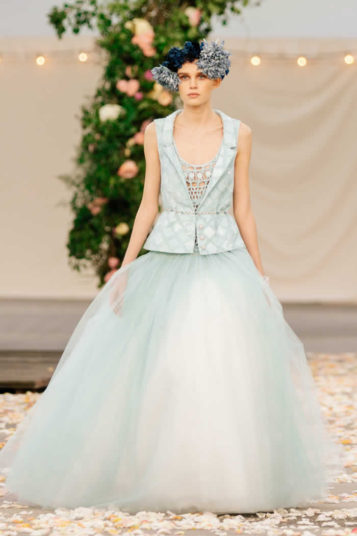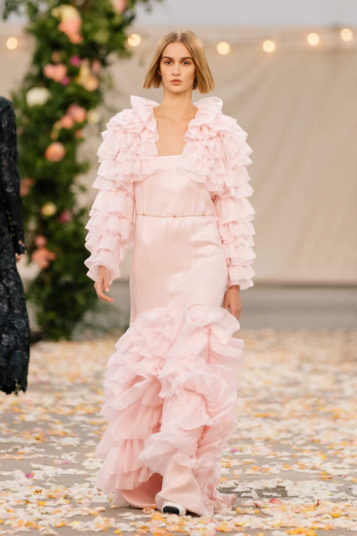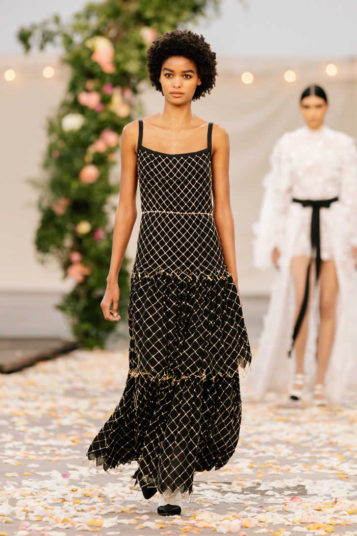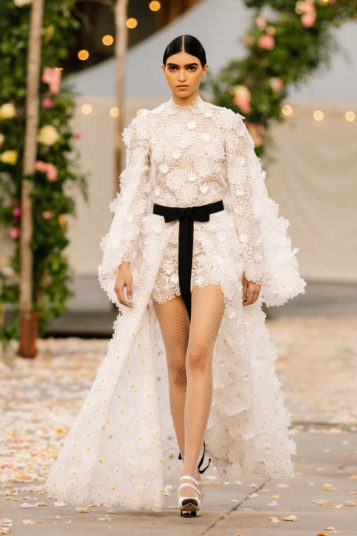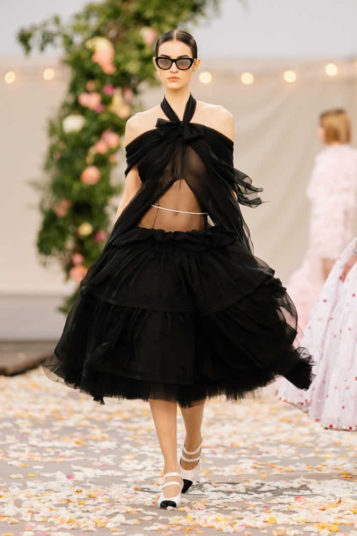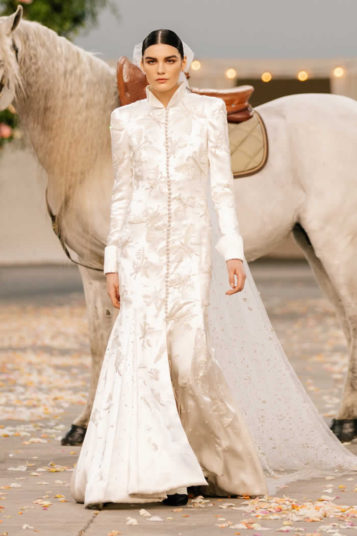These are not, as Viard says, the conventional fancy nuptials one might expect from a Parisian couture collection, but instead “more bohemian style—more a wedding or a family celebration in a village than at the Ritz!” complete with “the mother and the aunt, [and] the 15-year-old girl dressing up for the first time”—the latter in a tiny little grown-up black dress of spangled black tulle worn with 1980s opaque white tights.
There are also boys at this wedding, or rather girls who, in Viard’s words, are “a little garçonne” and dressed in old fashioned boys’ clothes—tweedy Oxford bags, and waistcoats for instance, a reminder of Gabrielle “Coco” Chanel’s appropriations of menswear in her designs, and her literal borrowing from the wardrobes of her lovers including Boy Capel and the Duke of Westminster.
The mother of the bride, meanwhile, has some chic little suits in silvery embroidery and lace to choose from, or a skinny shrunken cardigan jacket embroidered by Vernoux, while more adventurous guests might opt for a lace jumpsuit or a tiny tweed coat dress with a ruffled overskirt to tie on like an apron. There are “a lot of flounces and petticoats,” says Viard, as though the Gypsy Kings were playing at the celebration and the guests in those big tulle skirts were going to spin around the town square.
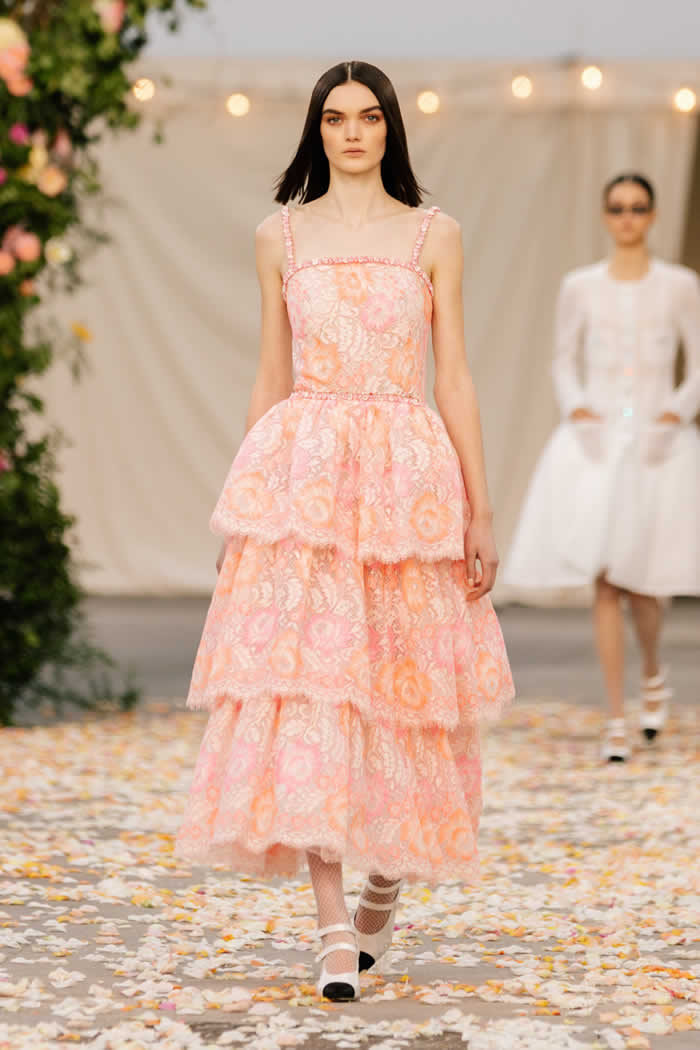 “There is a masculine/feminine side to the silhouettes,” she adds, and the fairy-tale grandeur of these pale net ballgowns is brought into the real world when those skirts are paired with white boyfriend shirts, or singlets of crocheted chiffon, worked by the embroidery house of Montex.
“There is a masculine/feminine side to the silhouettes,” she adds, and the fairy-tale grandeur of these pale net ballgowns is brought into the real world when those skirts are paired with white boyfriend shirts, or singlets of crocheted chiffon, worked by the embroidery house of Montex.
To set the scene, the Grand Palais has been transformed this season to evoke the charm of a country wedding in the South of France (the sunshine bright enough for the guests to wear Jacqueline Onassis–scale sunglasses), with rustic arches wrapped in flowers, wooden chairs for the socially distanced guests, and coronets of silk as well as real flowers in the hair—the first time, as far as Viard knows, that Lemarié, fabled for their exquisite artificial flowers, have also worked with the real McCoy.
The silhouettes might be simple—sweaters or sleeveless vests worn with high-waisted pants, skinny cardigan jackets and liquid satin shirts with full romantic ballet skirts—but the beauty is in the detail. This is the haute couture, after all, and the sort of garments we may have become familiar with in our work-from-home lives have actually been encrusted with superb embroideries from the houses of Cécile Henri, Hurel, Montex, Emmanuelle Vernoux, and Lesage, or made from custom, hand-painted lace by Solstiss, or scattered with artificial blossoms by Lemarié.
Hurel reinterpreted a sample from the historic archive of Kitmir that they acquired, the embroidery house created by Duchess Marie, the sister of Russia’s Grand Duke Dmitri who was Coco Chanel’s lover in the early 1920s. Chanel showcased Kitmir embroideries in her own designs at the time. Using the tiniest embroidery beads available, worked into the most delicate quilted diamond pattern, the single dress took Hurel’s workrooms several months to make—almost the entire time, in fact, that Viard and her ateliers were working on the collection from conception to presentation.
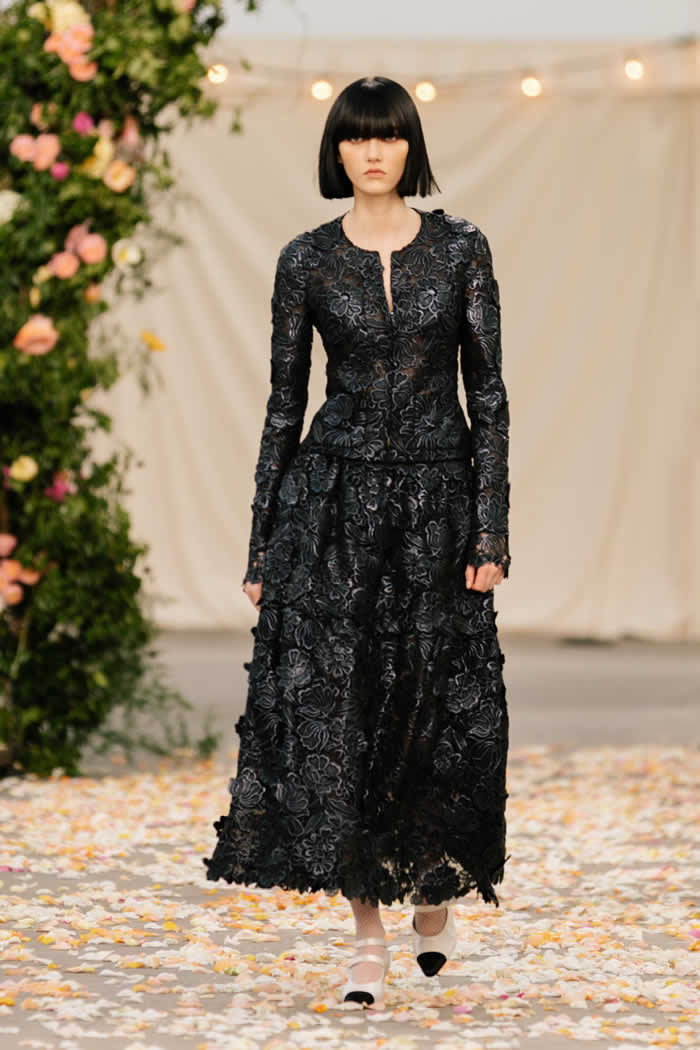 Look closely and you will see, for instance, that the full swirling hem of a flower-scattered chiffon dance dress is edged with individually cut-out and re-embroidered blossoms—a flourish with which Chanel herself used to finish some of her designs in the 1920s and ’30s, including some examples on display in the exhibition “Gabrielle Chanel: Fashion Manifesto” at Paris’s Palais Galliera (currently closed due to France’s COVID protocols).
Look closely and you will see, for instance, that the full swirling hem of a flower-scattered chiffon dance dress is edged with individually cut-out and re-embroidered blossoms—a flourish with which Chanel herself used to finish some of her designs in the 1920s and ’30s, including some examples on display in the exhibition “Gabrielle Chanel: Fashion Manifesto” at Paris’s Palais Galliera (currently closed due to France’s COVID protocols).
This season, Viard has also worked with photographer Anton Corbijn, whom she met when he shot her for the December 2020 Vogue profile, La Vie de Virginie, and whose music industry credentials—he has shot videos for U2 and Depeche Mode, among many others and directed Control, the magisterial biographical movie about Joy Division’s Ian Curtis—appealed to the rock chick in her.
The fabled haute couture salons on the rue Cambon have just been reimagined by the esteemed decorator Jacques Grange, a project initiated by Karl Lagerfeld who, as Viard recalls, mischievously told Grange that after his fabled clients Yves Saint Laurent and Pierre Bergé had both died, they could finally work together. The result, says Viard exultantly, “is great, really sophisticated!” and she asked Corbijn to photograph her wedding cortege in these salons.
Corbijn’s portfolio of family portraits includes Chanel ambassadors Penélope Cruz, Marion Cotillard, and Vanessa Paradis and her daughter, Lily-Rose Depp, while the bride, meanwhile, poses on the famous staircase with its mirror-faceted walls reflecting the charming Lesage embroidery of flights of pearly butterflies encircling her sleek ivory satin skirt dress, a dress, as Viard says, “a little bit like something seen in the old pictures—ivory satin, embroidery, and a big veil, not quite 1920s, but that atmosphere.”

